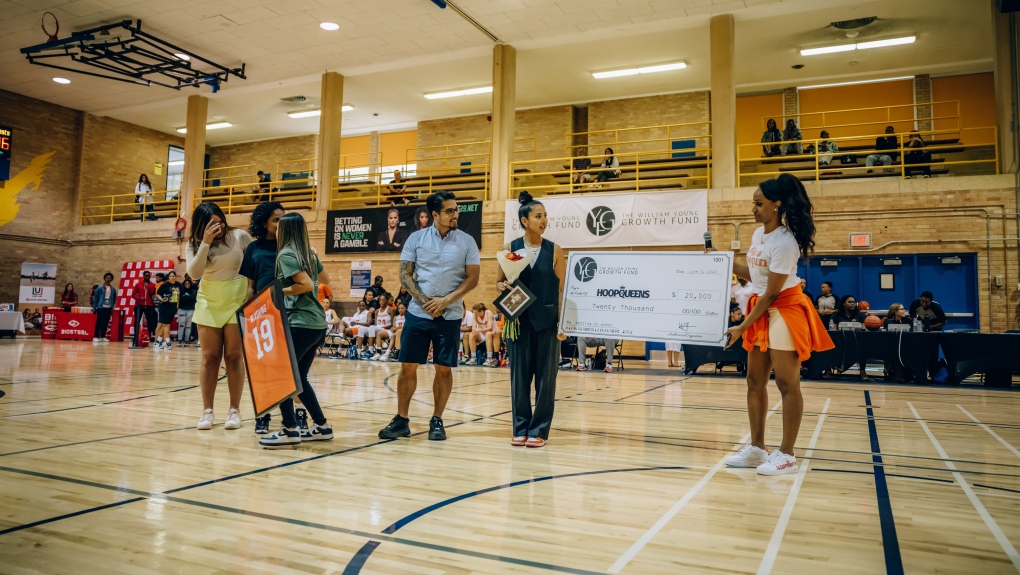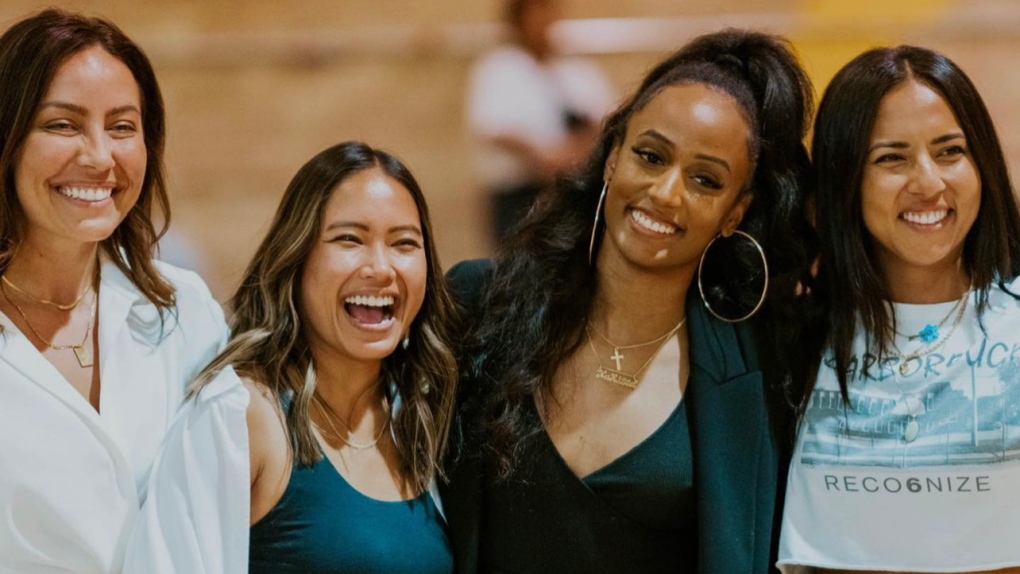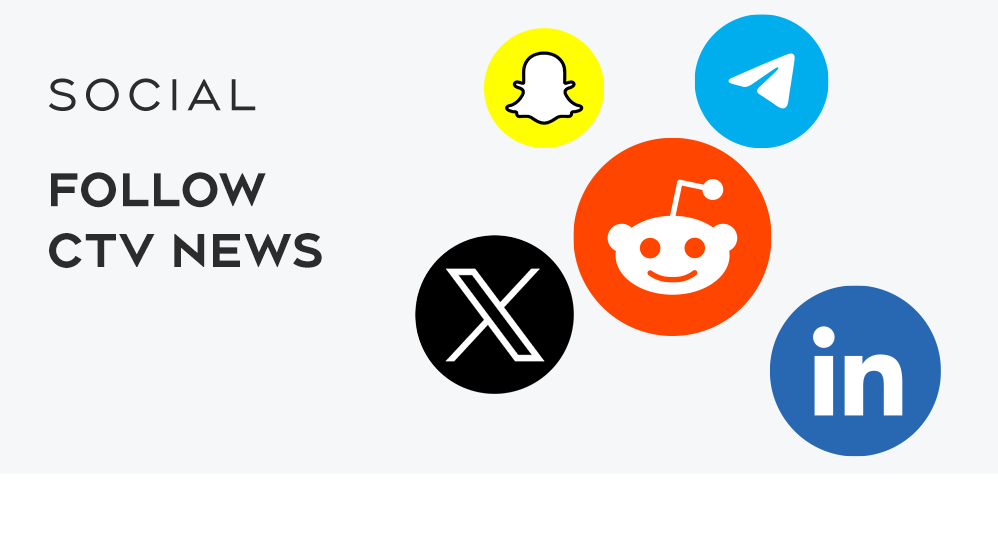Nakissa Koomalsingh is drawing up the plays for women’s basketball in Canada, hoping to lead it toward a bright future.
As the founder of Toronto-based HOOPQUEENS, the first paid women’s basketball leagues in the country, Koomalsingh has made it her mission to change the narrative of women’s sports by creating her own league centred around inclusion and the development of young girls and women.
“Everyone needs this outlet. There's no really safe space for girls to compete and play competitively with other girls,” Koomalsingh told CTVNews.ca.
HOW IT STARTED
A former collegiate player herself, Koomalsingh married her love of basketball with a business and finance degree from Nipissing University to conceive the league.
After an anterior cruciate ligament (ACL) injury took her out of the game, Koomalsingh took a step back to evaluate what she wanted to do post-graduation. Around that time, she started coaching with Canada Elite, a basketball league for girls aged 13 and 14, and fell in love with the mentoring aspect.
“I didn't see any young females, especially Black females, coaching, right? So, I was like, 'OK, when I'm older, and when I have kids, I'll start coaching.' But when I graduated, someone asked me to coach and I was like, 'No … it's not a thing for young Black girls to coach,'” Koomalsingh said. “But then they asked me again, and I was like, ‘OK, fine, I'll do it.’ And I loved it.”
Then came the grim months of early 2020, when opportunities for coaching or skill development for athletes came to a halt, as gyms closed and stay-at-home orders went into effect due to the COVID-19 pandemic.
It was then that Koomalsingh saw an opportunity to foster a new basketball community.
“The girls had no outlet at all to play. I knew a couple people within my network, and I was like, 'Hey, can we just get in the gym?'” Koomalsingh said. “Everyone wanted to stay in shape. So, I myself actually started playing with the girls that I was coaching.”
Koomalsingh then brought cameras into the mix as a way to replicate pro-league photography by showcasing talent through documenting the girls playing. The “coverage” of the ballers was starting to catch on in the basketball community, and the idea of a league started to grow from there.
She didn’t want this project to just have a pandemic shelf-life, she wanted to continue to grow this new community and see it thrive for years to come, especially as the number of young girls dropping out of sports continues to increase.
The Canadian government says recent studies revealed over 90 per cent of girls had decreased their play or stopped playing sports altogether during the pandemic, and one in four aren’t committed to returning to sports.
HOOPQUEENS may be one way to reverse these numbers.
A THRIVING PROGRAM
Fast forward to 2022, and HOOPQUEENS has boomed into a lively summer league with four teams of seasoned players, as well as year-round programming and scrimmages for younger female ballers.
“We do quite a bit of programming. We have our scrimmages, which is our bread and butter. We have that throughout the year, mainly. And then in the summer, when girls come back from university and high school, and then we have our girls or women's tournament,” Koomalsingh said.
The "Queens" in the league typically lace up for the league in their collegiate offseasons – either coming from their teams at the post-secondary level, or having recently graduated and not being ready to hang up their sneakers just yet.
Summer players typically go home at the end of summer with an extra $1,000 in their bank accounts—a noteworthy compensation considering no other league pays women for playing in Canada.
There’s been so much interest from players that the league is planning on running a "combine" for this upcoming summer, which is a tryout modelled after the professional level assessment of players, typically in front of coaches, scouts and managers.
 Meghan Yuri Young presents a cheque from the William Young Growth Fund to HOOPQUEENS alongside Nakissa Koomalsingh (right). (Supplied)
Meghan Yuri Young presents a cheque from the William Young Growth Fund to HOOPQUEENS alongside Nakissa Koomalsingh (right). (Supplied)
FUNDING OF THE LEAGUE
The league functions as a non-profit and receives funding from various organizations and donors, brands such as Canada Goose and Red Bull, as well as people within Koomalsingh’s network.
One of the most prominent sponsors of the league this year has been the family of the late William Young, a former basketball coach himself.
After Young passed away in 2021, his daughter, Meghan Yuri Young, found a meaningful way for his legacy to live on: by donating his estate, a $20,000 fund called the William Young Growth Fund, to support HOOPQUEENS.
It was an act of giving that Young says meant the world to her.
“Not only to be able to do this on my dad's and family's behalf ... but to also have the perfect opportunity, cause and support to do so. What Keesa is building is incredible and I know that my dad would not only have wanted to do this himself, but he would have been so impressed,” Young told CTVNews.ca “For our family to have even a small part in the HOOPQUEENS origin story has been so comforting during one of the hardest years of our lives.”
A GAME PLAN FOR CANADIAN HOOPS
While many of Canada’s top female ballers get recruited to play in the U.S., including 138 of the country’s female basketball players competing in the NCAA for the 2021-22 season, HOOPQUEENS is making it its mission to turn Canada into more of a women’s basketball hub.
As for the future of HOOPQUEENS, Koomalsingh hopes one day to have the funding and resources for a facility to have a physical space for her athletes, as well as take the league further than just Ontario and bring it across the nation.
“Our purpose is to change the landscape of basketball in Canada. You don't have to go overseas, or you don't have to go to America to get recognition or get exposure,” Koomalsingh said. “You know, our biggest thing is if we really want to have that recognition throughout the world. Canada has elite players here, and we want to be able to keep our homegrown athletes here. You know, honour [our] soil.”












































